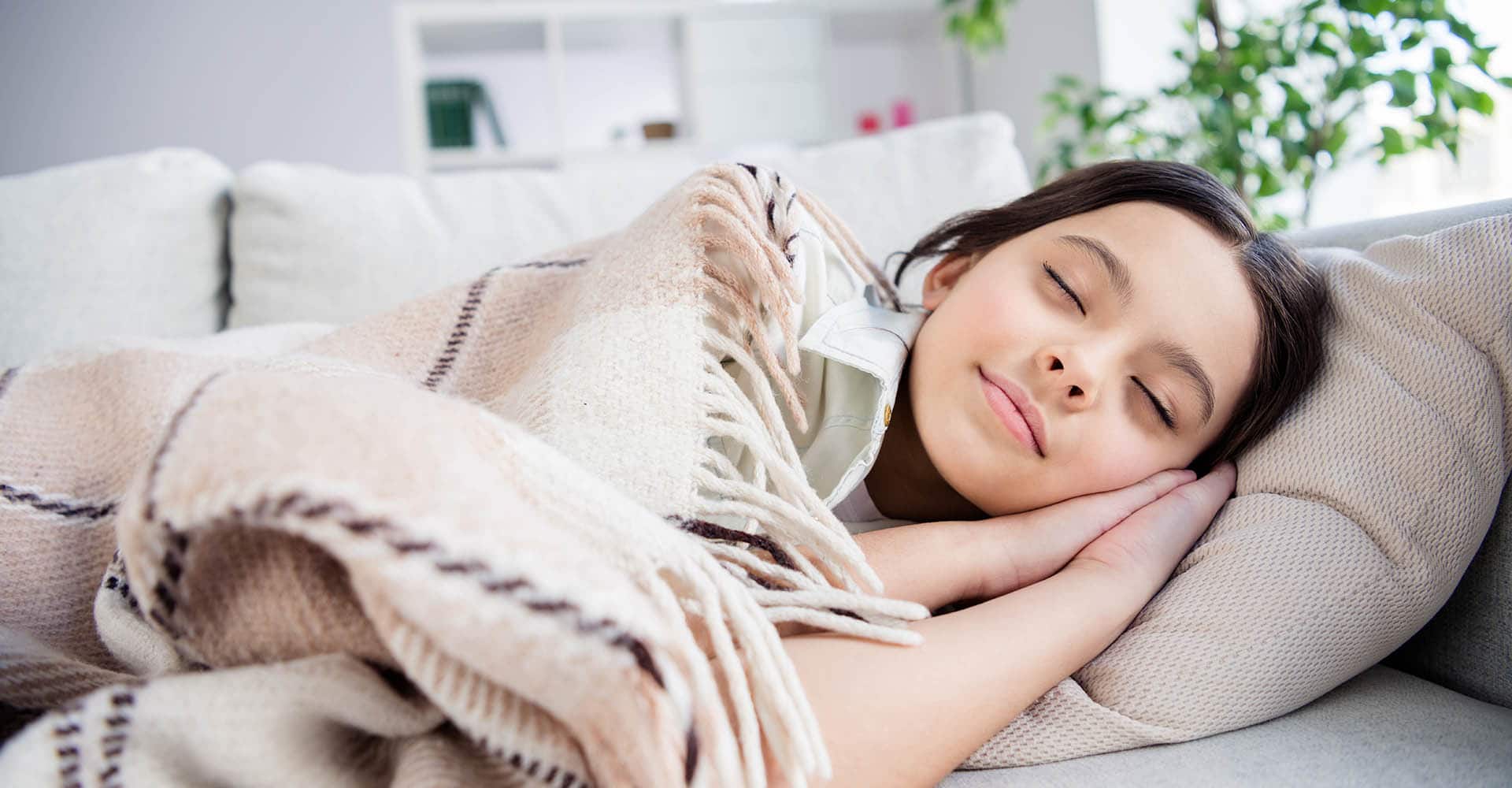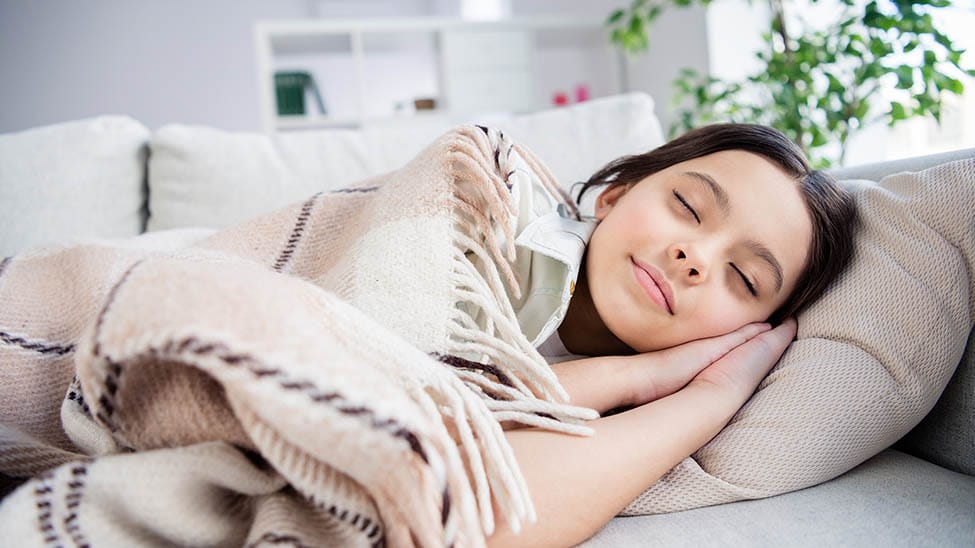
Our biological clock
The different sleep stages have a great influence on our perception at night. For outsiders, they are usually hard to distinguish, but even we don’t always get the same amount of information about our surroundings and dreams when we sleep. That’s why researchers in sleep labs measure the frequency of our brain waves to assign our sleep stages. However, this is usually not necessary. Because as long as we sleep well and sufficiently, everything is fine, isn’t it? Here and in our video, we explain the different sleep stages and answer the most frequently asked questions. Have fun!
What are the stages of sleep ? The normal sleep stages and their duration
The sleep cycle
A sleep cycle is passed several times in one night. These are all non-REM and REM stages. Towards the morning, the REM stages become more intense, while there are longer deep sleep stages, especially early in the night. One cycle of the sleep cycle lasts about 1.5 hours. It begins with the REM phase. But now from the beginning..
Sleep onset phase, light sleep and deep sleep
In the falling asleep phase, the body increasingly relaxes. The duration of this phase varies depending on how tired you are. As a transition between the waking state and deep sleep, light sleep or non-REM stages I and II follow. This makes up about half of the sleep. Non-REM phase III is deep sleep. It is the most important for restful sleep. This is because the body can regenerate here, while all other physical functions are shut down. At the same time, the immune system ramps up its activity and a particularly high level of growth hormones is released. You spend about 1.5 – 2 hours per night in deep sleep. For most people, this accounts for about 15 to 25% of the night. During this phase, it is possible to talk or walk during sleep.
REM stages
The REM phase (rapid eye movement) is also called the dream phase. This is because events of the previous day are processed and stored here. During this phase, some areas of the brain that are associated with long-term memory are particularly active. The person is completely introverted here and difficult to wake up. The next day, however, he may remember the dreams from the REM stages.
Wake-up stages
Wake-up stages occur more frequently during the night without us noticing. In these stages the body is prepared for the activity of the day. This happens, for example, through increased blood flow to the stomach or an increase in body temperature and cortisol levels.
In which of the sleep stages do most dreams occur?
Dream activity can be detected in every sleep phase. So, actually, we dream almost all the time when we sleep. And that without knowing about it. Thus, it often happens that we cannot remember any dream the next day. The intensity of our dream activity differs from phase to phase. During the REM phase our dreams are the most intense. As the name suggests, our eyes are in motion a lot during intense dreaming. But you can also tell how intense and much dreaming is going on by our jerky movements that occur during this phase of sleep. If you are awakened in REM sleep, then you can usually report your dreams much more frequently and in more detail than if you were awakened in other stages of sleep.
What do I do if I don’t get enough deep sleep each night?
Since deep sleep is a major determinant of how restful our sleep is, it’s obviously even more important to get enough, and more importantly, quality deep sleep. However, if you’re worried that you’re not getting enough deep sleep per night, don’t worry, because you can change that very quickly with a few simple tips and tricks. The most important thing is to get to the bottom of it and find out the cause of your lack of sleep. Try to banish as many disturbing factors from your environment as possible. Stress is one of the most common causes of sleep disorders, so it can also have a negative impact on the quality of your deep sleep. In order to fall asleep as relaxed as possible, we recommend that you set up your very own relaxation routine, which will help you to calm down before going to bed. Just do whatever works best for you at the time. Breathing exercises, meditation, reading or exercise in the fresh air are helpful. It’s better to put your electronic devices away about an hour before bedtime and stop watching movies and series on the TV. This is because the artificially generated light tends to keep us awake and the many stories keep us occupied deep into the night.
When is the right bedtime for adults, children and babies?
Bedtime for adults
Especially for adults, the right bedtime or the related hours that an adult sleeps per night varies greatly and thus cannot really be generalized. It is therefore not uncommon for some adults to feel rested and awake after just 5 hours, while others may not feel truly rested and fit for the day until after 10 hours. Depending on the age of the adults, there are serious differences. For example, younger adults, such as those in their twenties, usually need a little less sleep, which means that their bedtime is usually much later than that of older adults. So everyone has to decide for himself or herself how it suits him or her best and what makes him or her feel most comfortable and, above all, most rested. After all, the deep sleep stages, which play a decisive role in determining how restful our sleep is, are determined by our very own biological clock.
Bedtime for children
For children, the correct time to go to bed depends on the amount of sleep they need and the time they get up. The following rule of thumb applies: rise time minus the child’s personal sleep requirement. Generally speaking, children’s sleep requirements decrease as they get older. However, it still varies from child to child. For example, toddlers who are about two years old need an average of 12 to 13 hours of sleep. When children are three to four years old, they usually still need 11 to 12 hours of sleep. But of course, deviations of one to two hours are perfectly legitimate for every child and, above all, absolutely normal.
Bedtime for babies
A newborn baby is not yet able to recognize the day-night change. Instead, it has a rhythm of 5 to 6 sleep stages spread throughout the day and night. In each of these stages, it sleeps for about 4 hours. The number of sleep stages decreases to 3 hours for most one-year-old children. This includes a longer night sleep of about 6 to 8 hours of sleep and two shorter sleep periods during the day. By age one and a half, most children sleep only once a day, and by age two, naps can usually be eliminated altogether. But beware: Of course, there can be individual differences.
What is a sleep phase alarm clock?
A sleep phase alarm clock is very convenient because it analyzes our sleep and gently wakes us up in our light sleep stages. The previous setting of a certain period of time makes this possible. Such an alarm clock works through a headband, a wristband or an app, among others. Based on our brain waves, pulse or movements, these devices successfully figure out when it’s easiest for us to get up. Especially if you find it difficult to get out of bed on time in the morning or if you want to change your sleep rhythm in the long term, such an alarm clock is just the thing for you. Give yourself a well-deserved sleep and try this electronic sandman! Here we have tested some sleep phase alarm clocks for you. Feel free to have a look there!










